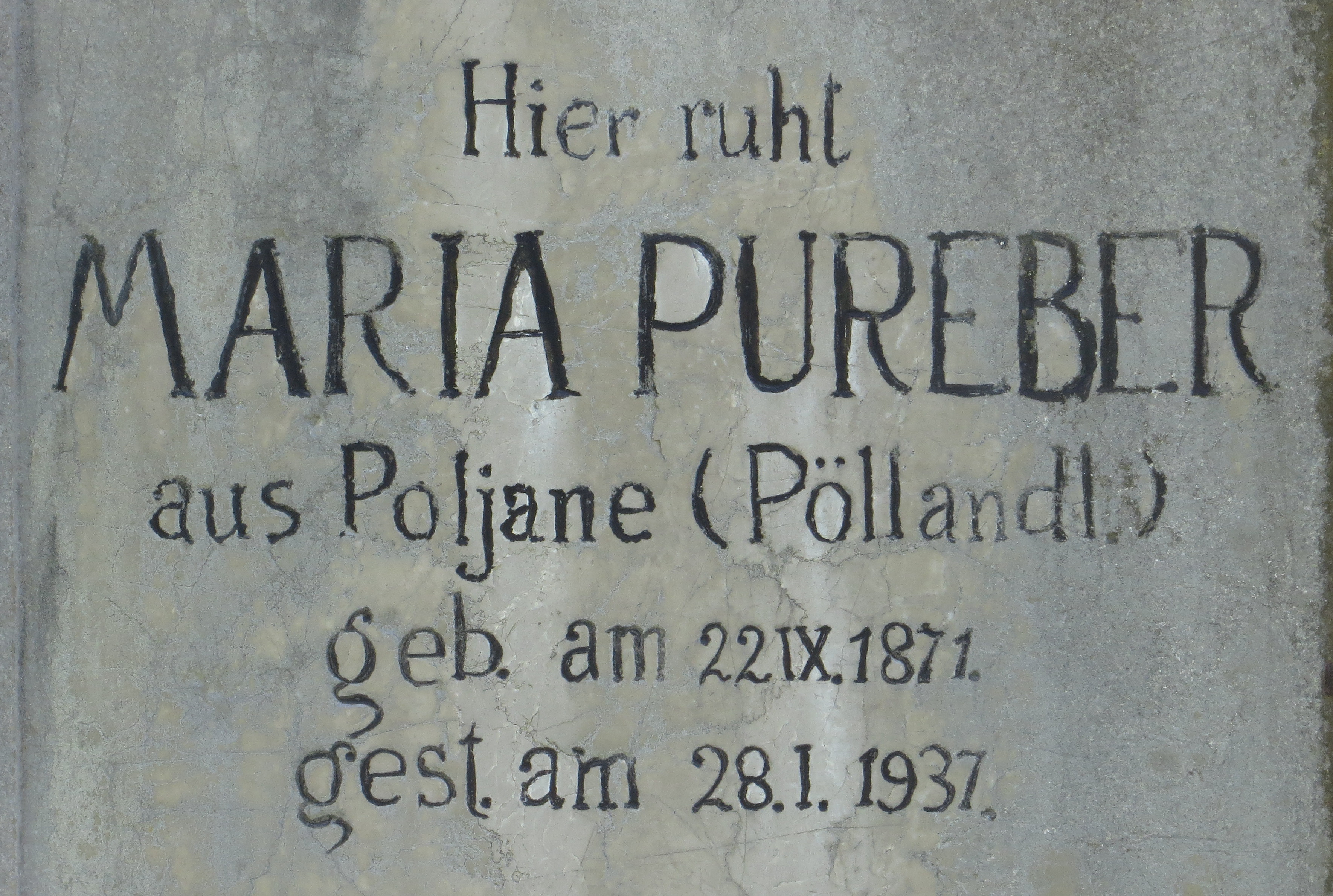Kočevske Poljane on:
[Wikipedia]
[Google]
[Amazon]
Kočevske Poljane (; ''Leksikon občin kraljestev in dežel zastopanih v državnem zboru,'' vol. 6: ''Kranjsko''. 1906. Vienna: C. Kr. Dvorna in Državna Tiskarna, p. 156–157.Ferenc, Mitja, & Gojko Zupan. 2012. ''Izgubljene kočevske vasi, vol. 2 (K–P)''. Ljubljana: Znanstvena založba Filozofske fakultete Univerze v Ljubljani, p. 224.) is a
 The name of the settlement was changed from ''Poljane'' to ''Kočevske Poljane'' in 1953. In the past the German name was ''Pöllandl''.
The name of the settlement was changed from ''Poljane'' to ''Kočevske Poljane'' in 1953. In the past the German name was ''Pöllandl''.
Zdravko Troha: ''Kočevski Nemci – partizani'' (Gottschee Germans – Partisans), Kočevje, Arhiv Slovenije. Slovensko kočevarsko društvo Peter Kosler, Ljubljana 2004,
Kočevske Poljane on GeopediaPre–World War II map of Kočevske Poljane with oeconyms and family names
Populated places in the Municipality of Dolenjske Toplice {{DolenjskeToplice-geo-stub
village
A village is a human settlement or community, larger than a hamlet but smaller than a town with a population typically ranging from a few hundred to a few thousand. Although villages are often located in rural areas, the term urban v ...
in the Municipality of Dolenjske Toplice in Slovenia
Slovenia, officially the Republic of Slovenia, is a country in Central Europe. It borders Italy to the west, Austria to the north, Hungary to the northeast, Croatia to the south and southeast, and a short (46.6 km) coastline within the Adriati ...
. The area is part of the historical region of Lower Carniola
Lower Carniola ( ; ) is a traditional region in Slovenia
Slovenia, officially the Republic of Slovenia, is a country in Central Europe. It borders Italy to the west, Austria to the north, Hungary to the northeast, Croatia to the south an ...
. The municipality is now included in the Southeast Slovenia Statistical Region
The Southeast Slovenia Statistical Region () is a statistical region in southeast Slovenia. It is the largest statistical region. The development of this region is largely the result of industry (the auto industry, pharmaceuticals, and other light ...
. The village includes the hamlets of Gorica ( or ''Büchel bei Pöllandl'') and Trnovec (or Trnje; ).
Name
History
Pöllandl was a village settled by Gottschee Germans inside theGottschee
Gottschee (, ) refers to a former German-speaking region in Carniola, a crownland of the Habsburg monarchy, Habsburg Empire, part of the historical and traditional region of Lower Carniola, now in Slovenia. The region has been a county, duchy, di ...
region until 1941. During the Second World War
World War II or the Second World War (1 September 1939 – 2 September 1945) was a World war, global conflict between two coalitions: the Allies of World War II, Allies and the Axis powers. World War II by country, Nearly all of the wo ...
its original population was resettled by the German authorities. However, some Gottscheer families managed to resist and prevent expulsion, and most of these collaborated with the Partisans of the Liberation Front of the Slovene People, which had a base (Baza 20) nearby. Their dialect Gottscheerish
Gottscheerish (''Göttscheabarisch'',Maridi Tscherne: Wörterbuch Gottscheerisch-Slowenisch. Einrichtung für die Erhaltung des Kulturerbes Nesseltal, Koprivnik/Nesseltal 2010. , ) is an Upper German dialect which was the main language of c ...
was forbidden after World War II, and so today there are only a few people left that speak it.Pokrajinski muzej Kočevje: Vsi niso odšli / Nicht alle sind gegangenZdravko Troha: ''Kočevski Nemci – partizani'' (Gottschee Germans – Partisans), Kočevje, Arhiv Slovenije. Slovensko kočevarsko društvo Peter Kosler, Ljubljana 2004,
Church
The localparish church
A parish church (or parochial church) in Christianity is the Church (building), church which acts as the religious centre of a parish. In many parts of the world, especially in rural areas, the parish church may play a significant role in com ...
is dedicated to Saint Andrew
Andrew the Apostle ( ; ; ; ) was an apostle of Jesus. According to the New Testament, he was a fisherman and one of the Twelve Apostles chosen by Jesus.
The title First-Called () used by the Eastern Orthodox Church stems from the Gospel of Jo ...
and belongs to the Roman Catholic Diocese of Novo Mesto
The Diocese of Novo Mesto (; ) is a Latin Church diocese of the Catholic Church in the city of Novo Mesto in the ecclesiastical province of Roman Catholic Archdiocese of Ljubljana, Ljubljana in Slovenia.
History
* April 7, 2006: Established as ...
. It dates to the 17th century. A second church belonging to the parish, built just north of the settlement in the hamlet of Gorica, is dedicated to Mary Help of Christians and was a pilgrimage church built in the late 17th century. The cemetery is one of only ten in the Kočevje region to have (mostly) preserved the tombstones of the Gottschee Germans.
Notable people
Notable people that were born or lived in Kočevske Poljane include the following: * August Schauer (1872–1941), parish priest at Koprivnik for over 30 years and editor of the ''Gottscheer Kalender'' (Gottschee Almanac) from 1925 to 1941Ferenc, Mitja, & Gojko Zupan. 2012. ''Izgubljene kočevske vasi'', vol. 2 (K–P). Ljubljana: Znanstvena založba Filozofske fakultete Univerze v Ljubljani.References
External links
*Kočevske Poljane on Geopedia
Populated places in the Municipality of Dolenjske Toplice {{DolenjskeToplice-geo-stub